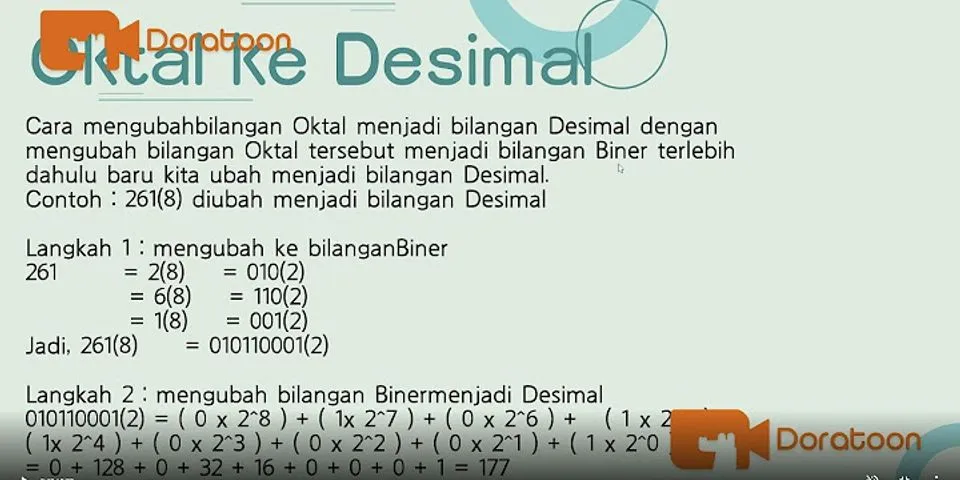Sehubungan dengan komputer, file adalah bagian dari informasi. Itu dapat diakses oleh sistem operasi atau program individu. Nama ini berasal dari dokumen kertas fisik yang digunakan di kantor. Karena file komputer melayani tujuan yang sama, mereka dipanggil dengan nama yang sama. Itu juga dapat dianggap sebagai objek komputer yang menyimpan data. Jika Anda menggunakan sistem GUI , file akan ditampilkan sebagai ikon. Anda dapat mengklik dua kali pada ikon untuk membuka file yang sesuai.  Apa itu File Komputer?File komputer(Computer) dapat bervariasi dalam formatnya. File yang serupa dalam jenis (informasi yang disimpan) dikatakan memiliki format yang sama. Ekstensi file yang merupakan bagian dari nama file akan memberi tahu Anda formatnya. Jenis file yang berbeda adalah – file teks, file data, file biner, file grafik, dll… Klasifikasi ini didasarkan pada jenis informasi yang disimpan dalam file. File dapat memiliki atribut tertentu juga. Misalnya, jika file memiliki atribut baca-saja, informasi baru tidak dapat ditambahkan ke file. Nama file juga merupakan salah satu atributnya. Nama file menandakan tentang apa file tersebut. Jadi, lebih baik memiliki nama yang bermakna. Namun, nama file sama sekali tidak memengaruhi konten file. Komputer(Computer) File disimpan di berbagai perangkat penyimpanan – hard drive, drive optik, dll… Cara(How) file diatur disebut sistem file. Dalam direktori, 2 file dengan nama yang sama tidak diperbolehkan. Juga, karakter tertentu tidak dapat digunakan saat menamai file. Berikut ini adalah karakter yang tidak diterima dalam nama file – / , , <, >, :, *, ?, |. Juga, kata-kata tertentu yang dicadangkan tidak dapat digunakan saat menamai file. Nama file diikuti dengan ekstensinya (2-4 karakter). Setiap OS memiliki sistem file untuk memberikan keamanan pada data dalam file. Manajemen file(File) juga dapat dilakukan secara manual atau dengan bantuan alat pihak ketiga. Ada satu set operasi yang dapat dilakukan pada file. Mereka:
Format file(File formats)Seperti disebutkan sebelumnya, format file menandakan jenis konten yang disimpannya. Format umum untuk file gambar adalah JPEG, JPG, PNG . Dokumen teks mungkin memiliki ekstensi docx atau txt. File audio biasanya termasuk dalam format seperti wav dan mp3 sedangkan mp4 adalah ekstensi yang dibawa oleh file video. File tertentu(Certain) disimpan dalam format terkompresi. File zip berisi file dan folder lain. Namun, itu masih dianggap sebagai satu file. File ISO(ISO file) digunakan untuk menyimpan informasi yang ditemukan pada disk. Ini adalah representasi dari disk fisik. Ini juga dianggap sebagai satu file. Bisakah file dikonversi dari satu format ke format lain?(Can a file be converted from one format to another?)Dimungkinkan untuk mengonversi file dalam satu format ke format lain. Ini dilakukan ketika format sebelumnya tidak didukung oleh perangkat lunak atau jika Anda ingin menggunakan file untuk tujuan lain. Misalnya, file dalam format doc tidak dikenali oleh pembaca PDF . Untuk membukanya dengan pembaca PDF , itu harus dikonversi ke format PDF . Jika Anda ingin mengatur audio mp3 sebagai nada dering di iPhone Anda, audio harus terlebih dahulu dikonversi ke m4r agar iPhone mengenalinya sebagai nada dering. Banyak konverter online gratis mengonversi file dari satu format ke format lainnya. Membuat file(Creating a file)Penciptaan adalah operasi pertama yang dilakukan pengguna pada file. File Komputer(Computer) baru dibuat menggunakan perangkat lunak pra-instal di komputer. Misalnya, jika Anda ingin membuat file gambar, digunakan editor gambar. Demikian pula, Anda memerlukan editor teks untuk membuat file teks. Setelah membuat file, itu harus disimpan. Anda dapat menyimpannya di lokasi default yang disarankan oleh sistem atau mengubah lokasi sesuai keinginan Anda. Baca Juga: (Also Read:) Apa Sebenarnya Sistem File Itu?(What Exactly Is a File System?) Untuk memastikan bahwa file yang ada terbuka dalam format yang dapat dibaca, file tersebut harus dibuka hanya melalui aplikasi pendukung. Jika Anda tidak dapat memastikan program yang sesuai, perhatikan ekstensinya dan rujuk secara online untuk program yang mendukung ekstensi tersebut. Juga, di Windows , Anda mendapatkan prompt 'buka dengan' bersama dengan daftar kemungkinan aplikasi yang dapat mendukung file Anda. Ctrl+O adalah pintasan keyboard yang akan membuka menu file dan memungkinkan Anda memilih file mana yang akan dibuka. Penyimpanan file(File storage)Data yang disimpan dalam file dan folder diatur dalam struktur hierarkis. File disimpan di berbagai media mulai dari hard drive hingga disk ( DVD dan floppy disk). Manajemen file(File management)Pengguna Windows dapat menggunakan Windows Explorer untuk melihat, mengatur, dan mengelola file. Sekarang mari kita lihat bagaimana melakukan operasi dasar pada file seperti – menyalin, memindahkan, mengganti nama, menghapus, dan membuat daftar file dalam direktori/folder.  1. Obtaining a list of files by directory/folder Buka Windows Explorer/Computer , buka drive C:. Di sinilah Anda akan menemukan file dan folder di direktori root hard drive utama Anda. Cari(Search) file Anda di folder file program atau Dokumen Saya karena ini adalah 2 folder umum tempat sebagian besar program/dokumen Anda dapat ditemukan. 2. Menyalin file(2. Copying files) Menyalin file akan membuat duplikat dari file yang dipilih. Buka file/folder yang perlu disalin. Pilih mereka dengan mengkliknya dengan mouse. Untuk memilih beberapa file, tekan tombol shift atau ctrl. Anda juga dapat menggambar kotak di sekitar file yang perlu dipilih. Klik kanan dan pilih salin. Ctrl+C adalah pintasan keyboard yang digunakan untuk menyalin. Konten yang disalin akan disimpan di clipboard dan Anda dapat menempelkan file/folder di lokasi pilihan Anda. Sekali lagi(Again) , klik kanan dan pilih tempel atau gunakan pintasan keyboard Ctrl+V untuk menempelkan file yang disalin. Karena tidak ada dua file dalam direktori yang sama dapat memiliki nama yang sama, file duplikat akan memiliki nama asli dengan akhiran numerik. Misalnya, jika Anda membuat salinan file bernama abc.docx, duplikatnya akan diberi nama abc(1).docx atau abc-copy.docx. Anda juga dapat mengurutkan file menurut jenisnya di Windows Explorer . Ini berguna jika Anda ingin menyalin file jenis tertentu saja. 3. Memindahkan file dan folder(3. Moving files and folders) Menyalin(Copying) berbeda dengan memindahkan. Saat menyalin, Anda menduplikasi file yang dipilih sambil mempertahankan aslinya. Memindahkan menyiratkan bahwa file yang sama sedang digeser ke lokasi yang berbeda. Hanya ada satu salinan file– itu dipindahkan ke lokasi berbeda di sistem. Ada beberapa metode untuk melakukan ini. Anda cukup menyeret file dan meletakkannya di lokasi barunya. Atau Anda dapat memotong (pintasan Ctrl+X ) dan menempelkannya. Satu lagi cara adalah dengan menggunakan perintah pindah ke folder. Pilih file, klik menu Edit dan pilih opsi Pindahkan(Move) ke folder. Sebuah jendela terbuka di mana Anda dapat memilih lokasi baru file. Terakhir, klik tombol Pindahkan(Move) . 4. Mengganti nama file(4. Renaming a file) Nama file dapat diubah menggunakan metode yang berbeda.
Direkomendasikan: (Recommended:) Apa itu Pembaruan Windows?(What is Windows Update?) Sekali lagi, ada beberapa metode untuk menghapus file. Juga, perlu diingat bahwa jika Anda menghapus folder, semua file dalam folder juga akan terhapus. Metode-metode ini dijelaskan di bawah ini.
Ringkasan(Summary)
With respect to computers, a file is a piece of information. It can be accessed by the operating system оr individual programs. The nаme is derived from the physiсal paper documents that were υsed in offices. Since сomрuter files serve the same purpose, they are called by the same namе. Іt can alѕo be thought of аs a computer object that stores data. If you are using a GUI system, files will be displayed аs icons. You can double сlick on an icon to open the corresponding fіle.  What is a Computer file?Computer files can vary in their format. Files that are similar in type (of information stored) are said to be of the same format. The file’s extension which is a part of the filename will tell you its format. The different types of files are – text file, data file, binary file, graphic file, etc…The classification is based on the kind of information stored in the file. Files can have certain attributes too. For example, if a file has a read-only attribute, new information cannot be appended to the file. The filename is also one of its attributes. The filename signifies what the file is about. So, it is better to have a meaningful name. However, the name of the file in no way affects the file’s contents. Computer Files are stored on various storage devices – hard drives, optical drives, etc… How files are organized is called the file system. Within a directory, 2 files with the same name are not allowed. Also, certain characters cannot be used while naming a file. The following are the characters that are not accepted in a filename – / , \, <, >, :, *, ?, |. Also, certain reserved words cannot be used while naming a file. The name of the file is followed by its extension (2-4 characters). Every OS has a file system in place to provide security to data in the files. File management can also be done manually or with the help of third-party tools. There is a set of operations that can be performed on a file. They are:
File formatsAs mentioned before, the format of a file signifies the kind of content it stores. The common formats for an image file are JPEG, JPG, PNG. Text documents may have the extension docx or txt. Audio files usually belong to formats such as wav and mp3 while mp4 is an extension that video files carry. Certain files are stored in a compressed format. A zip file contains other files and folders. However, it is still considered a single file. An ISO file is used to hold information found on a disk. It is a representation of a physical disk. This is also considered as a single file. Can a file be converted from one format to another?It is possible to convert a file in one format to another. This is done when the previous format is not supported by a software or if you want to use the file for a different purpose. For example, a file in doc format is not recognized by a PDF reader. To open it with a PDF reader, it has to be converted to PDF format. If you want to set an mp3 audio as a ringtone on your iPhone, the audio has to be first converted to m4r so that the iPhone recognizes it as a ringtone. Many free online converters convert files from one format to another. Creating a fileCreation is the first operation the user performs on a file. A new Computer file is created using a pre-installed software on the computer. For example, if you want to create an image file, an image editor is used. Similarly, you would need a text editor to create a text file. After creating the file, it has to be saved. You can either save it in the default location suggested by the system or change the location according to your preference. Also Read: What Exactly Is a File System? To make sure that an existing file opens in a readable format, it has to be opened only through supporting applications. If you are not able to ascertain a suitable program, take note of its extension and refer online for programs that support that particular extension. Also, in Windows, you get an ‘open with’ prompt along with a list of possible applications that may support your file. Ctrl+O is the keyboard shortcut that will open the file menu and let you choose which file to open. File storageData stored in files and folders are organized in a hierarchical structure. Files are stored on a variety of media ranging from hard drive to disk (DVD and floppy disk). File managementWindows users can make use of the Windows Explorer to view, organize, and manage files. Let us now see how to perform basic operations on files like – copying, moving, renaming, deleting, and listing the files in a directory/folder.  1. Obtaining a list of files by directory/folder Open Windows Explorer/Computer, go to the C: drive. This is where you will find the files and folders in the root directory of your primary hard drive. Search for your files in the program files folder or My Documents as these are the 2 common folders where the majority of your programs/documents can be found. 2. Copying files Copying a file will create a duplicate of the chosen file. Go to the files/folders that need to be copied. Select them by clicking them with the mouse. To select multiple files, press the shift or ctrl keys. You may also draw a box around the files that need to be selected. Right-click and select copy. Ctrl+C is the keyboard shortcut used for copying. The copied content will be stored in the clipboard and you can paste the file(s)/folder(s) in the location of your choice. Again, right-click and select paste or use the keyboard shortcut Ctrl+V to paste the copied files. Since no two files in the same directory can have the same name, the duplicate file will have the name of the original with a numerical suffix. For example, if you make a copy of a file named abc.docx, the duplicate will bear the name abc(1).docx or abc-copy.docx. You can also sort the files by type in the Windows Explorer. This is helpful if you want to copy files of a certain type only. 3. Moving files and folders Copying is different from moving. While copying, you duplicate the selected file while retaining the original. Moving implies that the same file is being shifted to a different location. There is only one copy of the file– it is moved to a different location in the system. There are several methods to do this. You can simply drag the file and drop it in its new location. Or you could cut (shortcut Ctrl+X) and paste. One more way is to use the move to folder command. Select the file, click on the Edit menu and select the Move to folder option. A window opens up where you can select the new location of the file. Finally, click on the Move button. 4. Renaming a file The name of a file can be changed using different methods.
Recommended: What is Windows Update? Again, there are a couple of methods for deleting a file. Also, keep in mind that if you delete a folder, all the files in the folder get deleted as well. These methods are described below.
Summary
|

Pos Terkait
Periklanan
BERITA TERKINI
Periklanan
Terpopuler
Periklanan
Tentang Kami
Dukungan

Copyright © 2024 berikutyang Inc.


















